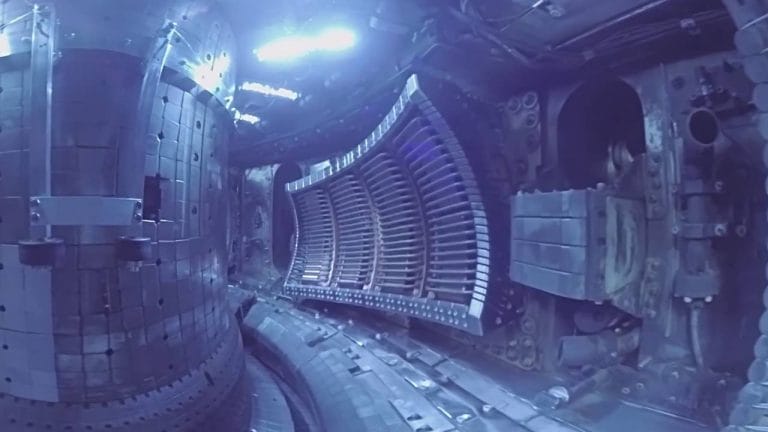MIT has Set a New Record for Nuclear Fusion
Nuclear fission reactors is not something new, but getting solar power via stable nuclear fusion is still a goal that is to be conquered. Now, a team of scientists working on the Alcator C-Mod tokamak fusion reactor at MIT, are getting closer towards this goal.
Source: MIT Plasma Science and Fusion Center
This team was able to set a world record for plasma pressure inside the reactors, wherein it reached over 2 atmospheres of pressures for the first time at a temperature over 35 million Celsius. This record was set on the final run of the Alcator C-Mod reactor. The Alcator C-Mod reactor will be retiring soon after 23 years of use.
Unlike nuclear fission reactors, which create radioactive waste, nuclear fusion is the number one candidate for generating unlimited clean, safe, and carbon-free energy. The energy from fusion is completely renewable and virtually pollution-free.

Alcator C-Mod is an experimental device called a tokamak: a configuration considered for future fusion reactors. C-Mod is the world’s only compact, high-magnetic field, diverted tokamak, allowing it to access unique experimental regimes and influence the direction of the world fusion program. The high-field – up to 160,000 times the Earth’s magnetic field – allows the small device to create the dense, hot plasmas, which are greater than 100 million degrees, prototypical of what is envisioned in a fusion reactor.
C-Mod holds the record for highest volume average plasma pressure in a magnetic confinement device, which is an important metric for fusion performance. The third in a series of high-field tokamaks at MIT, C-Mod leverages PSFC expertise in high-field magnets, high power radio-waves, plasma physics, fusion materials, theory and simulation, and cutting-edge engineering. This has enabled the device to produce a wealth of new and important results since the experiment began operation in 1993.

The unique experiment has contributed data that extends physics understanding into new parameter ranges, developed new tokamak operating regimes, and demonstrated important technical solutions to fusion problems.
The plasma is heated to very high power densities using radio-frequency heating from novel antennas and sustained with microwave current drive. The relatively large power in a small device allows for tests of heat exhaust at reactor-relevant heat and particle fluxes in reactor-relevant divertor geometries. To handle these conditions, C-Mod pioneered the use of the vertical target-plate divertor with refractory metals, a design that has been incorporated into other devices including ITER. Studies on C-Mod have clarified the roles of rotation and shear on transport and stability across the plasma and have demonstrated stable operating regimes at high field that eliminate explosive instabilities.

One of three domestic tokamaks and a US Department of Energy funded user-facility, C-Mod engages collaborators from all over the world to plan and execute experiments. The team of over 100 professors, scientists, students, engineers, and technicians makes C-Mod the largest experiment at MIT with participation from many MIT academic departments. Following completion of operations at the end of September, 2016, the facility has been placed into safe shutdown, with no additional experiments planned at this time. There is a wealth of data archived from the more than 20 years of operations, and the experimental and theoretical teams continue to analyze the results and publish them in the scientific literature.
Source: MIT
















